
Roots
In the vibrant expanse of human expression, few elements carry the ancestral weight and profound identity as textured hair. Its coils and curls, each strand a testament to resilience and adaptation, have always been more than mere biological structures. They are living archives, whispering stories of generations, climates, and ingenuity. For countless millennia, across the continent of Africa, the care and adornment of this intrinsic crowning glory were imbued with purpose far beyond simple aesthetics.
A deep understanding of hair’s very being, its elemental biology, guided ancient communities in their practices, leading them to the profound and persistent use of oils in protective styling. This practice did not arise from fleeting fancy but from an intuitive grasp of what textured hair truly needed to thrive in diverse environments, a wisdom passed down through touch, observation, and communal ritual.

What Constitutes Textured Hair Anatomically?
To truly grasp the wisdom of ancient African communities, we must first consider the fundamental architecture of textured hair itself. Unlike straight or wavy strands, the helical shape of a curl presents unique biological characteristics. Each spiral, from a broad wave to a tight coil, represents a point of mechanical weakness, making it more susceptible to breakage if not handled with reverence. The elliptical cross-section of the hair shaft, a signature of textured hair, dictates its curvature, causing the cuticle scales—the hair’s protective outer layer—to lift slightly at the turns.
This inherent lift means textured hair naturally loses moisture more quickly than straighter hair types. Moreover, the scalp’s natural sebum, the body’s own conditioning oil, often struggles to travel effectively down the length of these winding strands, leaving the ends particularly vulnerable to dryness and environmental exposure. It is this very physiological reality that ancient African communities, through astute observation over countless seasons, recognized as a central challenge, and to which oils provided a foundational answer. They saw the hair as a living entity, constantly interacting with its surroundings, needing specific nourishment to retain its vibrancy and strength.
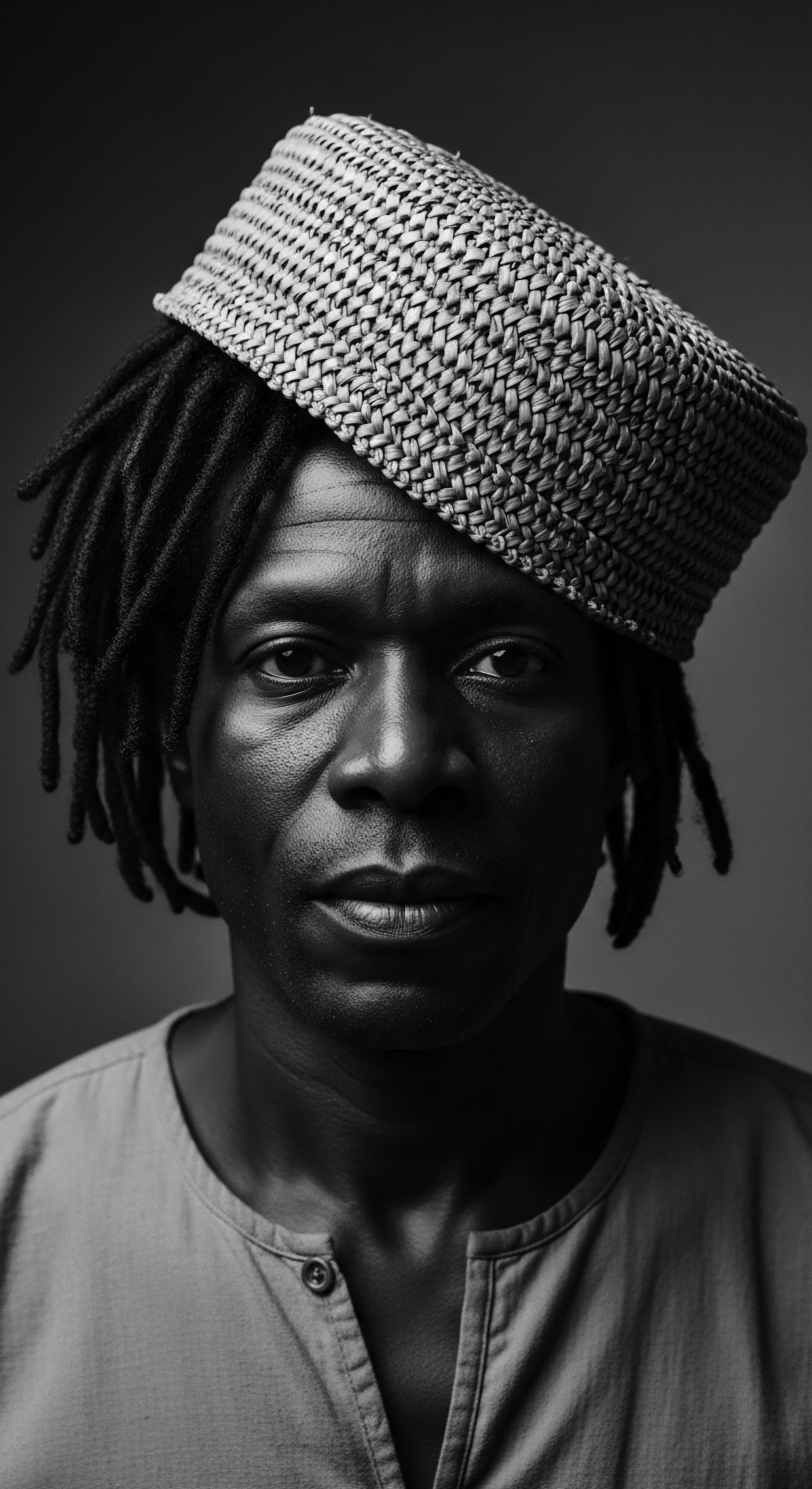
Ancestral Classifications of Hair Types
While modern hair classification systems often rely on numerical or alphabetical charts, ancestral African communities developed a nuanced understanding of hair types rooted in their cultural and environmental contexts. These classifications were not merely about curl pattern; they extended to hair density, porosity, and how the hair responded to various natural elements and applications. A particular lineage might have hair renowned for its exceptional length retention, while another was celebrated for its extraordinary softness. Knowledge of these inherent qualities guided the choice of specific botanicals and animal fats.
This deep, experiential understanding formed a living taxonomy, influencing everything from daily grooming routines to the selection of hair for ceremonial styles. The wisdom held by elders, particularly women, who possessed generational insight into the properties of different hair types within their communities, ensured that care was always tailored, never a one-size-fits-all approach. For example, some strands might require a heavier oil to seal in moisture, while finer textures would benefit from lighter applications, a distinction observed and honored long before scientific laboratories could analyze lipid compositions.
Ancient African wisdom, born from keen observation, perceived hair’s intrinsic needs, laying the groundwork for protective oil practices.

A Traditional Lexicon for Hair Care
The language surrounding hair in ancient Africa reflects its profound societal importance. Terms did not simply describe physical attributes; they conveyed spiritual significance, communal bonds, and historical continuity. Consider the various words for braids, each specific to a region or ethnic group, detailing not just the technique but the social meaning embedded within. The choice of terms for oils, butters, and hair concoctions was equally precise.
Words like Chebe, a mixture used by the Basara Tribe in Chad, speak to a specific blend of herbs and animal fat applied to hair braided for length retention. In Ethiopia and Somalia, women created a homemade “hair butter” from whipped animal milk and water, a testament to resourcefulness and deep knowledge of natural ingredients. This rich vocabulary, passed down through oral tradition, served as a comprehensive guide for hair care, ensuring that each ingredient and technique was understood within its broader cultural and practical context. It was a language of care, of community, and of the enduring heritage of textured hair.

Understanding Hair Cycles and Historical Influences
The growth cycle of hair, a seemingly universal biological process, was nevertheless impacted by environmental factors and lifestyle across ancient African societies. The harsh sun, arid climates, and sometimes challenging nutritional landscapes of various regions meant hair was constantly subjected to stressors. These communities recognized that hair growth was not merely about length but about strength and vitality through each stage of its cycle—from the active growing phase (anagen) to the resting phase (telogen) and the shedding phase (exogen). Oils played a vital role in supporting these cycles.
By regularly applying moisturizing and fortifying oils, they aimed to extend the anagen phase by minimizing breakage, thereby preserving length and density. This proactive approach safeguarded the hair against the damage caused by environmental elements and daily activities. Consider the Himba people of Namibia, who coat their hair with Otjize, a mixture of butterfat and ochre, which not only protects their hair from the sun but also gives it a distinctive reddish hue, underscoring both its protective and aesthetic functions. This practice, enduring for centuries, reflects a deep ancestral understanding of environmental protection and hair health.

Ritual
The application of oils in ancient African communities transcended simple conditioning; it was a deeply ingrained ritual, a sacred act of care that shaped the very art and science of textured hair styling. These practices were not isolated acts but formed an integral part of communal life, reflecting social status, spiritual beliefs, and the enduring resilience of cultural identity. The styles themselves, often protective in nature, relied heavily on the properties of various oils to maintain integrity, prevent damage, and signify belonging. These were living traditions, passed from elder to youth, ensuring that the wisdom of hair care continued to nourish not only the strands but also the spirit of the community.

How Did Traditional Styling Techniques Rely on Oils?
Ancient African protective styling techniques were inherently designed to safeguard textured hair from environmental rigors and daily wear, and oils were indispensable to their efficacy. Styles like braids, twists, and locs, recognized as foundational protective styles, were carefully constructed to minimize manipulation of the hair shaft and to keep delicate ends tucked away. Before, during, and after the styling process, oils served as crucial emollients. They provided the necessary slip for easier detangling and braiding, reducing friction and preventing breakage during these intricate, often hours-long, sessions.
Furthermore, oils were vital for sealing in moisture, creating a barrier against the drying effects of sun, wind, and dust. This was particularly important given the natural propensity of textured hair to lose hydration. For instance, the traditional use of Shea Butter in West Africa for moisturizing and maintaining braids and locs speaks to this ancient understanding of hair protection. It was a preventative measure, ensuring the longevity of the style and the health of the hair beneath.
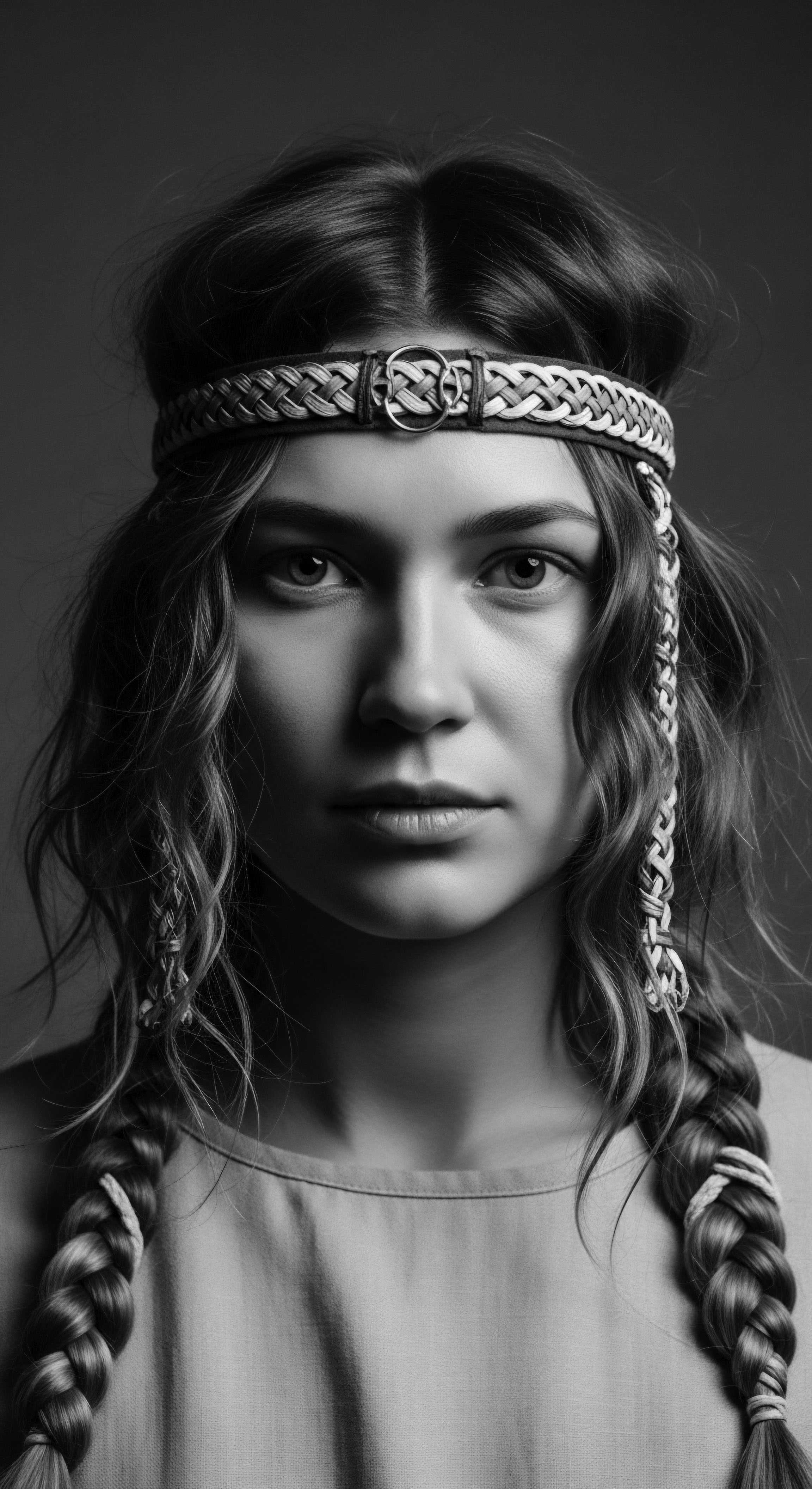
Ancestral Roots of Protective Styles
The protective styles so prevalent in contemporary textured hair care possess deep ancestral roots, tracing back thousands of years to African communities where hair held profound cultural weight. Braids, for example, are believed to date back as far as 3500 BC, serving not only as aesthetic adornments but also as indicators of age, marital status, wealth, and tribal affiliation. The intricate patterns could even convey messages or serve as maps for escape during periods of enslavement. In creating these styles, oils played a functional role in conditioning the hair and scalp, ensuring flexibility and reducing tension.
The application of oils was often part of the communal activity of braiding, a time for bonding, storytelling, and the transmission of generational knowledge. This communal aspect underscores that hair care was never a solitary endeavor but a shared ritual that reinforced social structures and preserved cultural heritage.
Consider a brief survey of traditional styles and their connection to oil use:
- Cornrows ❉ Originating perhaps as early as 3000 BC, these close-to-the-scalp braids often utilized oils to condition the scalp and hair during installation, promoting scalp health and minimizing tension.
- Bantu Knots ❉ From the Zulu people of Southern Africa, these coiled buns required softened, pliable hair, which oils would help achieve, aiding in their tight, protective formation.
- Locs ❉ While diverse in origin and method, the maintenance of locs often involved oils to keep them moisturized, prevent dryness within the tightly coiled strands, and ensure the health of the scalp supporting their growth.
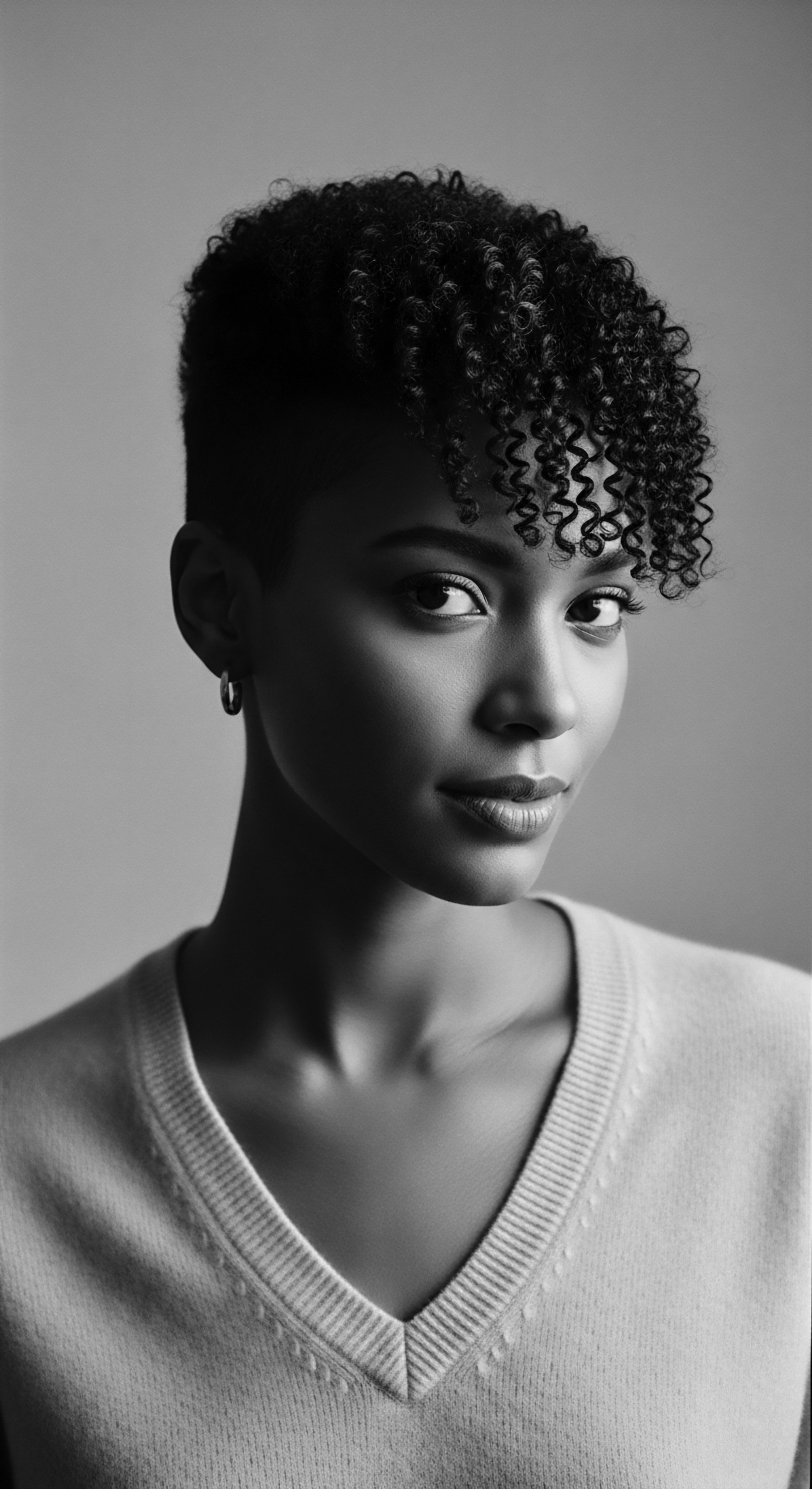
Traditional Tools for Application
The ingenuity of ancient African communities extended to the creation of specialized tools for hair care and styling, many of which facilitated the optimal application of oils. Beyond the fingers, which served as the primary instruments for massage and distribution, various combs and implements were crafted from natural materials such as wood, bone, or even fish bones, as seen in ancient Egypt. These tools were designed not only for detangling and sectioning but also for spreading oils evenly through the hair and stimulating the scalp.
The meticulous nature of these tools suggests a sophisticated approach to hair care, where every step, including oil application, was deliberate and precise. The act of combing and oiling was often a meditative practice, allowing the oils to penetrate and nourish, while also providing a gentle massage that enhanced circulation to the scalp, further supporting hair vitality.
Oils were not merely adjuncts; they were integral to the structural integrity and longevity of ancestral protective styles.

Wigs and Hair Extensions in Historical Context
The history of hair adornment in ancient Africa also includes the extensive use of wigs and hair extensions, particularly prominent in cultures such as ancient Egypt. These elaborate creations served practical purposes, like protecting the scalp from the scorching desert sun and preventing lice, while also signifying social status and spiritual devotion. Oils and fatty substances played a role in maintaining these hairpieces. Ancient Egyptians, for instance, used fat-based “gel” to set and preserve hairstyles on both natural hair and wigs, ensuring they remained in place in life and even in death.
Beeswax was also applied to wigs, likely to provide a protective coating and help maintain their form. The practice of combining human hair with plant fibers or even animal hair to create these extensions meant that the conditioning properties of oils were essential to keep them pliable and integrated seamlessly with one’s natural hair. This historical context highlights how oils were employed not just for one’s own growing hair but for the extended forms of styling that allowed for even greater cultural expression and protection.
| Oil/Butter Type Shea Butter |
| Region of Common Use West Africa |
| Primary Protective Styling Application Moisturizing and sealing moisture into braids and locs for length retention. |
| Oil/Butter Type Castor Oil |
| Region of Common Use North Africa (Egypt), West Africa |
| Primary Protective Styling Application Scalp treatments, stimulating growth, strengthening hair in various protective styles. |
| Oil/Butter Type Marula Oil |
| Region of Common Use Southern Africa (Mozambique, South Africa) |
| Primary Protective Styling Application Moisturizing skin and hair, used for general hair health and potentially in styling. |
| Oil/Butter Type Chebe (Herb-infused oil/animal fat) |
| Region of Common Use Chad (Basara Tribe) |
| Primary Protective Styling Application Applied to braided hair to promote extreme length retention. |
| Oil/Butter Type Otjize (Butterfat and ochre) |
| Region of Common Use Namibia (Himba Tribe) |
| Primary Protective Styling Application Coating hair for sun protection and distinctive coloring in loc-like styles. |
| Oil/Butter Type Animal Milk Butter (Whipped) |
| Region of Common Use Ethiopia, Somalia |
| Primary Protective Styling Application Homemade "hair butter" used for overall hair maintenance and health. |
| Oil/Butter Type These ancient practices demonstrate a deep, localized knowledge of botanicals and animal products for hair vitality and preservation across diverse African communities. |

Relay
The enduring legacy of how ancient African communities used oils in protective styling is not a relic of the past, but a living tradition that continues to shape contemporary hair care. This historical continuity provides a profound foundation for understanding modern practices, validating ancestral wisdom through scientific lens, and connecting individual wellness to collective heritage. It is here, at the intersection of ancient knowledge and current understanding, that the true depth of textured hair care reveals itself, offering holistic approaches that transcend fleeting trends.

Building Regimens from Ancestral Wisdom
Modern textured hair care regimens, whether consciously or not, often echo the foundational principles established by ancient African practices. The ancestral approach to hair care was holistic, considering diet, environment, and communal well-being as integral to hair health. Oils were not merely topical applications; they were part of a comprehensive system designed to nourish, protect, and maintain hair integrity. This integrated philosophy contrasts with often fragmented modern approaches that address isolated symptoms.
Ancient communities understood the need for consistent moisture, gentle handling, and long-term protection—all factors that contribute to length retention and healthy strands. The deep, ingrained respect for natural ingredients and the understanding of their specific properties for hair care, passed down through generations, served as the bedrock for personalized regimens. This ancestral wisdom often meant that the choice of oil, whether Shea Butter, Castor Oil, or Marula Oil, was dictated by local availability, climate, and the specific needs of the individual’s hair type, creating truly bespoke care practices.

The Nighttime Sanctuary and Bonnet Wisdom
One of the most powerful enduring elements of traditional African hair care, intrinsically linked to the use of oils in protective styling, is the concept of nighttime protection. While specific historical documentation of “bonnets” as we know them might be scarce, the practice of safeguarding hair during sleep was undoubtedly present through various forms of headwraps or careful styling. The goal was simple ❉ to minimize friction, prevent tangling, and preserve moisture, especially after applying nourishing oils. This ancestral practice recognized that the hours of sleep, when the body rests and repairs, also offered a crucial period for hair rejuvenation and protection.
Oils applied before sleep would be sealed in, working their magic undisturbed, ensuring that the hair retained its softness and pliability upon waking. The wisdom of preserving styles and protecting delicate strands overnight speaks to a deep understanding of hair mechanics and a commitment to maintaining hair health over time, a practice that continues to influence the contemporary use of satin bonnets and scarves in textured hair communities globally. The consistency of this ritual across generations underscores its efficacy and importance in preserving textured hair heritage.
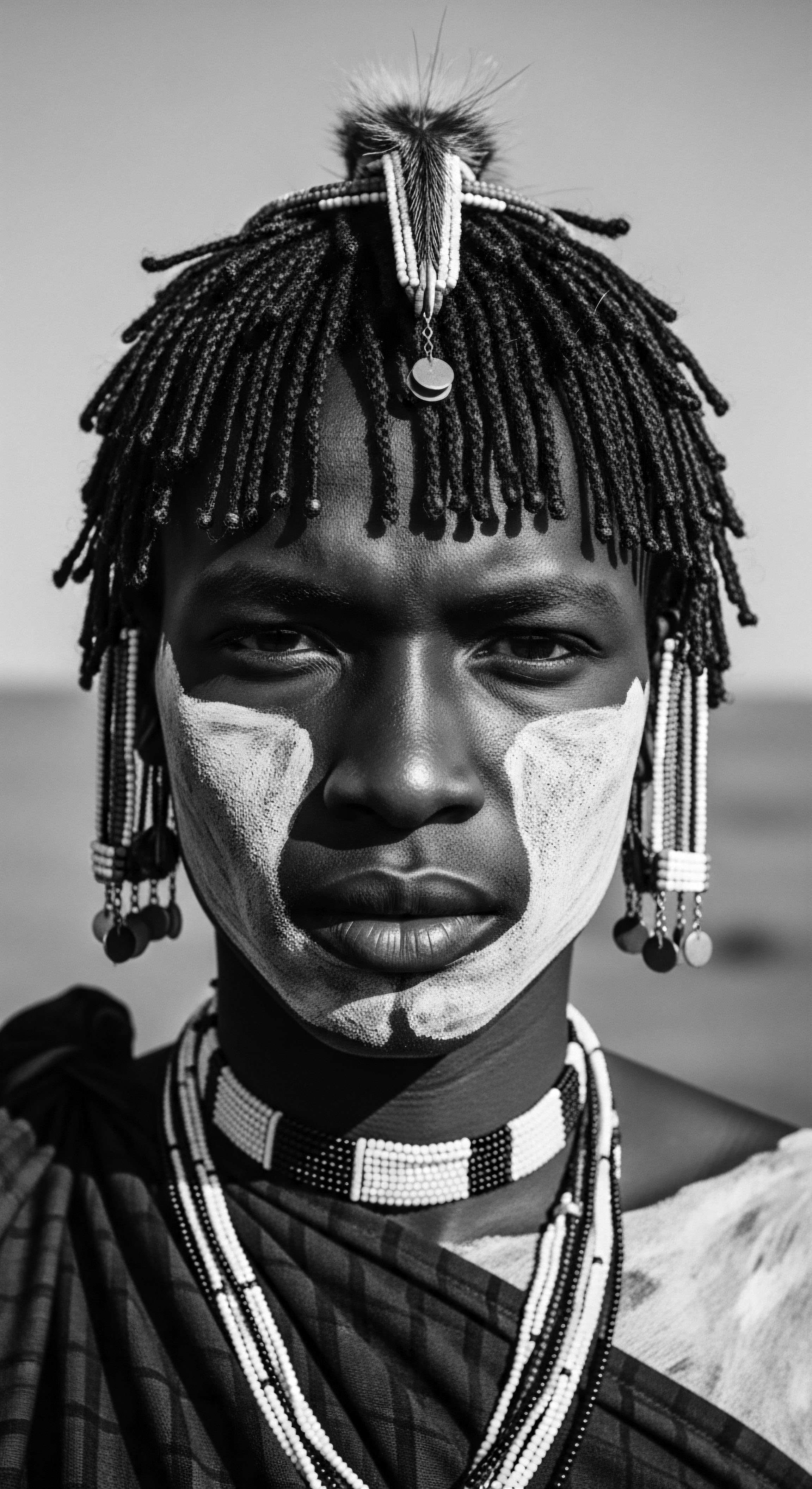
Ingredient Deep Dives from Tradition to Science
Many traditional African oils used in protective styling are now lauded by modern science for their specific benefits, validating ancestral choices. These ingredients were selected not randomly but through centuries of empirical observation, their efficacy proven by their consistent results. For instance, Shea Butter, extracted from the nuts of the shea tree, is a powerhouse of moisturizing properties, rich in fatty acids and vitamins, which is why it has been widely used for both hair and skincare in West Africa. Its ability to seal in moisture and provide a protective barrier makes it ideal for preventing dryness and breakage in braided or twisted styles.
Similarly, Castor Oil, a staple in many African traditions, is recognized for its ricinoleic acid content, which promotes scalp circulation and supports hair growth, making it a valuable addition to scalp treatments used to maintain protective styles. Even lesser-known traditional oils like Marula Oil, from Southern Africa, are now appreciated for their high antioxidant content and lightweight moisturizing qualities, ideal for nourishing hair without heavy residue.
One notable historical example that powerfully illuminates the connection between ancient African communities, oils, protective styling, and textured hair heritage is the practice of the Basara Tribe of Chad. This community has maintained a practice involving a mixture known as Chebe, an herb-infused raw oil or animal fat, applied weekly to their hair, which is then braided. This method is specifically employed for extreme length retention. This ancient tradition, documented in modern observations, highlights a direct, ancestral correlation between consistent oil application in a protective braided style and the remarkable preservation and growth of textured hair.
The longevity of this practice over generations speaks volumes to its effectiveness and its embeddedness within the tribe’s cultural identity and hair heritage, offering a living case study of historical ingenuity in action. The Basara practice demonstrates that indigenous knowledge, when applied consistently with locally sourced materials, can achieve profound and enduring results in hair health.
Ancestral hair wisdom, exemplified by the Basara Tribe’s Chebe ritual, reveals a potent synergy between oils and protective styling for enduring length retention.

Addressing Hair Challenges with Ancient Solutions
The challenges faced by textured hair—dryness, breakage, and scalp irritation—are not new phenomena; ancient African communities encountered these issues and developed solutions deeply rooted in their environment and communal wisdom. Oils were central to this problem-solving. For instance, the use of oils for scalp care was paramount in preventing dryness, flakiness, and irritation, conditions that can impede healthy hair growth and undermine protective styles. Rather than solely focusing on hair length, many groups prioritized scalp health and length retention, understanding that healthy hair grows from a healthy scalp.
When hair became brittle or prone to breaking, the application of various botanical oils served as a restorative measure, strengthening the strands and increasing their flexibility. This proactive and reactive use of oils, often infused with indigenous herbs, allowed ancient communities to maintain hair health despite environmental stressors, ensuring that protective styles offered true sanctuary for the hair.
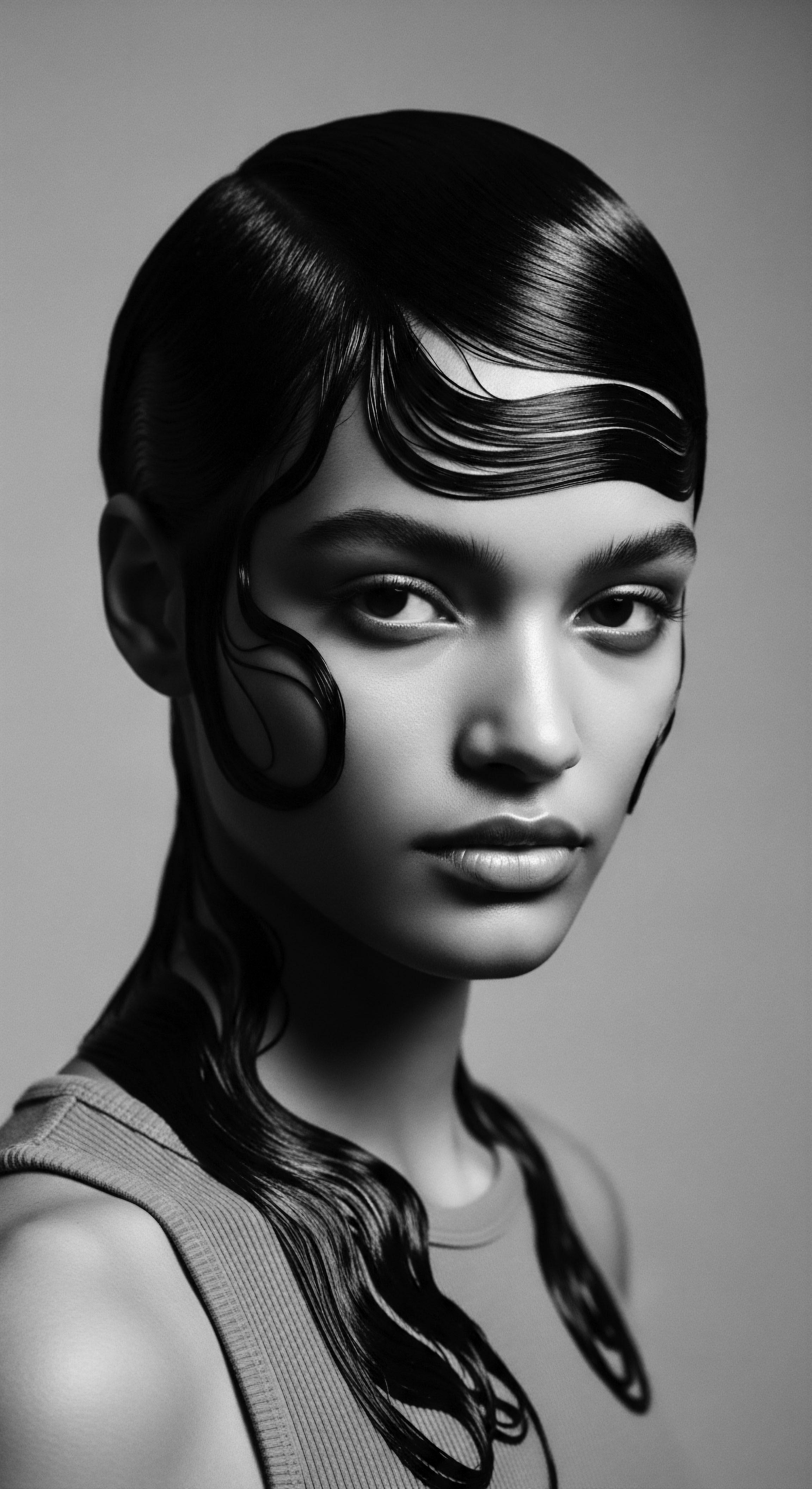
Holistic Influences on Hair Health and Lifestyle
The role of oils in ancient African hair care extended beyond the physical, integrating into a broader philosophy of holistic well-being. Hair was often seen as a spiritual conduit, a symbol of one’s connection to ancestors and community. Therefore, the rituals of oiling and styling were often accompanied by meditation, communal gatherings, and storytelling, reinforcing a sense of balance for the mind, body, and spirit. The selection of oils was sometimes guided by their aromatic properties, used to soothe and calm, or by their perceived spiritual attributes.
This deeper connection meant that hair care was not a superficial act but a meaningful part of daily life, reflecting a profound respect for the self and one’s heritage. The longevity of these practices, surviving generations and even periods of forced cultural disruption, speaks to the inherent value and efficacy of these holistic approaches to textured hair care, grounded in ancestral wisdom and an appreciation for the gifts of the land.

Reflection
As we gaze upon the intricate spirals and resilient coils of textured hair today, we find ourselves standing on a rich historical continuum, a living archive of care and identity woven through countless generations. The ancient African communities, in their profound understanding of oils and their application in protective styling, laid down a foundational wisdom that continues to echo in our current routines. It was a wisdom born of necessity and observation, a testament to human ingenuity and an abiding reverence for the gifts of the earth. From the nourishing touch of Shea Butter to the protective embrace of Chebe, these practices were not merely about preserving strands; they were about preserving a lineage, safeguarding a culture, and expressing a powerful sense of self.
The enduring significance of oiling in textured hair care reminds us that our hair is a sacred trust, a tangible link to those who came before us, and a vibrant symbol of resilience for those who will follow. Each application of oil, each carefully crafted protective style, is a quiet conversation with our ancestral past, a continuation of a legacy of care that celebrates the unique soul of each strand.

References
- Akihisa, T. Yasukawa, K. Kimura, Y. Takase, S. Tsuruta, M. & Suzuki, T. (2007). Anti-inflammatory and anti-tumor-promoting effects of triterpene alcohols and sterols from shea butter. Journal of Oleo Science, 56(11), 673-682.
- Dube, M. & Shoko, D. (2020). Ethnobotanical survey of medicinal plants used for hair care in selected areas of KwaZulu-Natal, South Africa. South African Journal of Botany, 134, 219-224.
- Harding, C. R. & McMichael, A. (2020). Black hair ❉ The intersection of culture, identity, and dermatology. Journal of the National Medical Association, 112(1), 3-8.
- Jackson, R. (2018). Textured Hair ❉ A Scientific Perspective. John Wiley & Sons.
- Johnson, D. W. (2019). The African Origin of Hair Braiding. Inquiries Journal, 11(05).
- Khumalo, N. P. Gcaba, L. & Ngcobo, T. (2016). Hair in black women ❉ What we know and what we don’t. International Journal of Dermatology, 55(2), 223-228.
- Ladipo, T. (2017). Hair Culture in West Africa ❉ Ancient Traditions and Modern Trends. University of Ibadan Press.
- McCreesh, N. & Gettings, F. (2011). The ancient Egyptians styled their hair using a fat-based ‘gel’. Journal of Archaeological Science, 38(12), 3422-3424.
- Okoye, M. O. (2016). Indigenous knowledge and practices in hair care among the Yoruba people of Southwestern Nigeria. Journal of African Studies and Development, 8(6), 66-73.
- Robbins, C. R. (2012). Chemical and Physical Behavior of Human Hair. Springer Science & Business Media.
